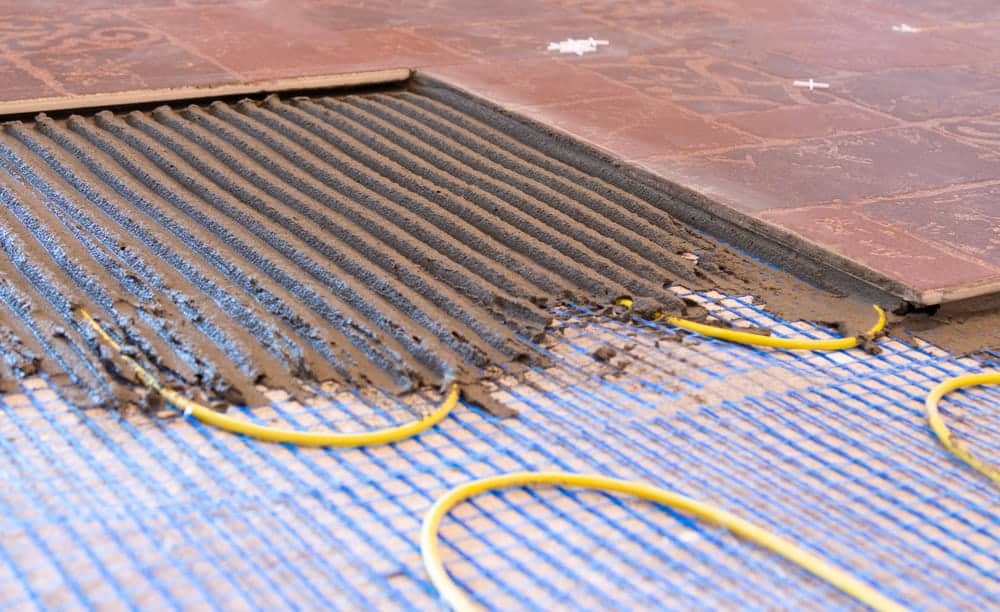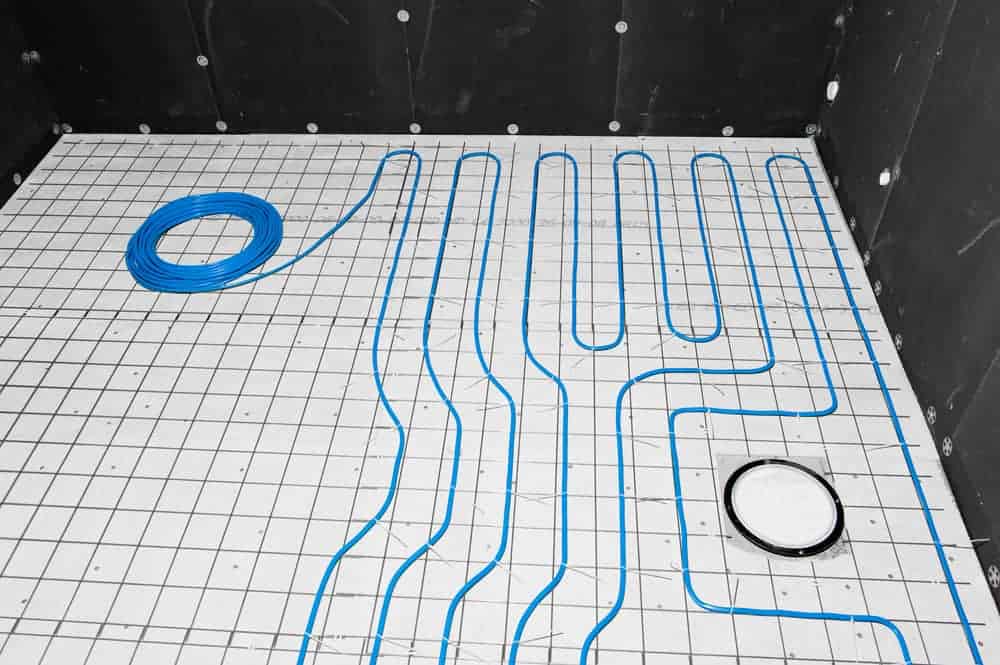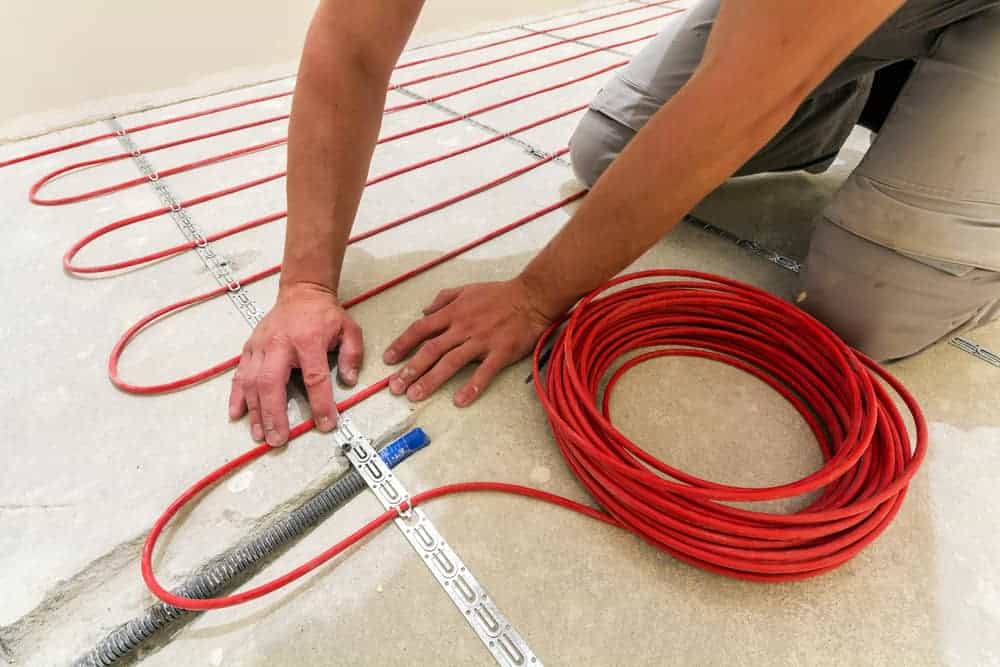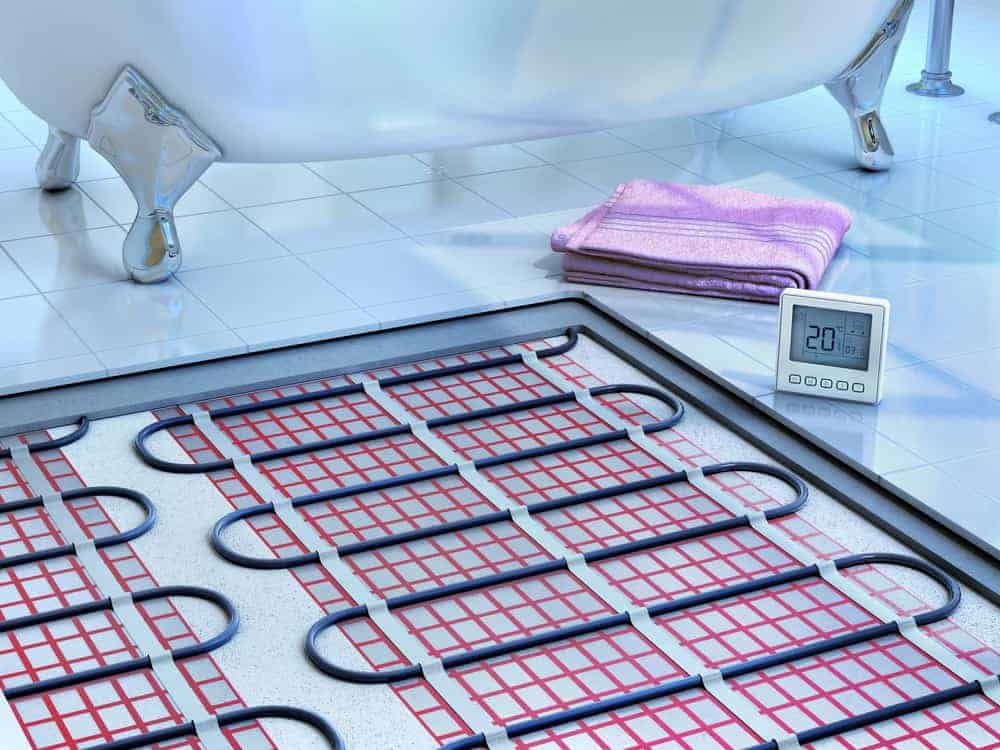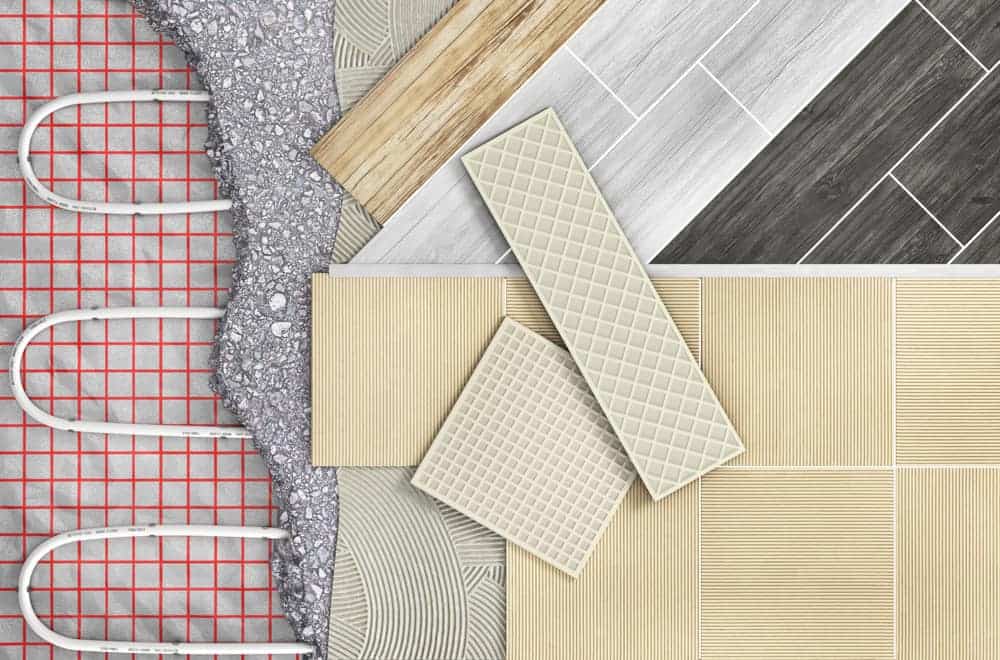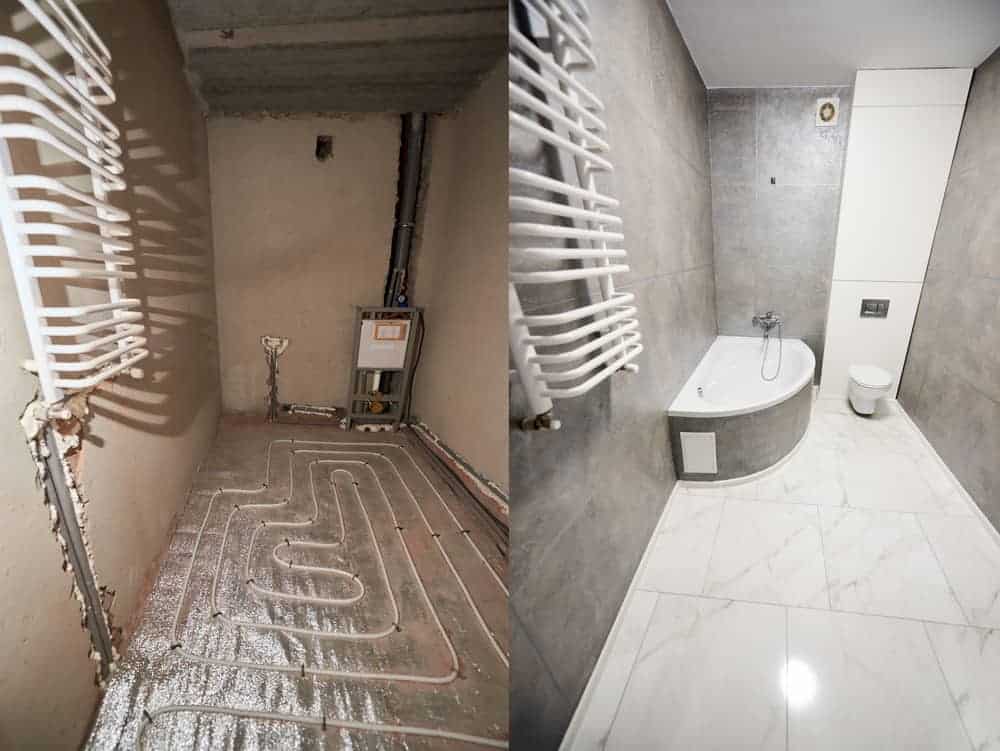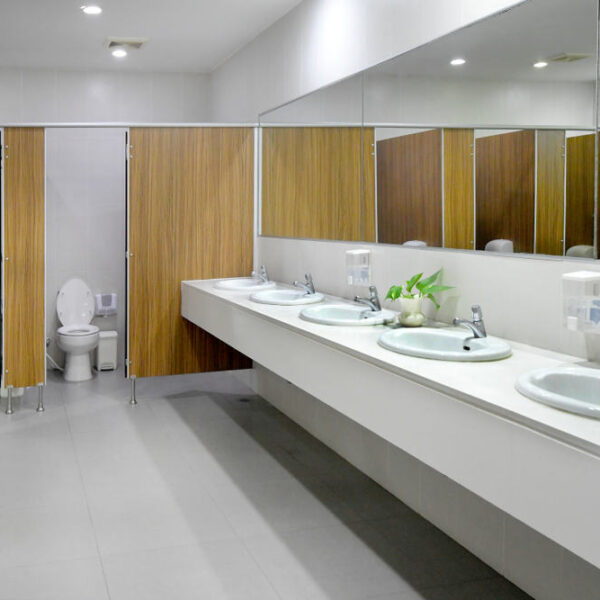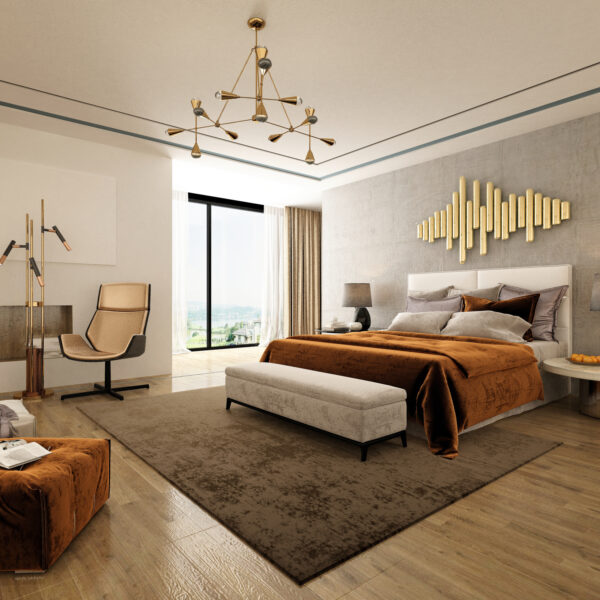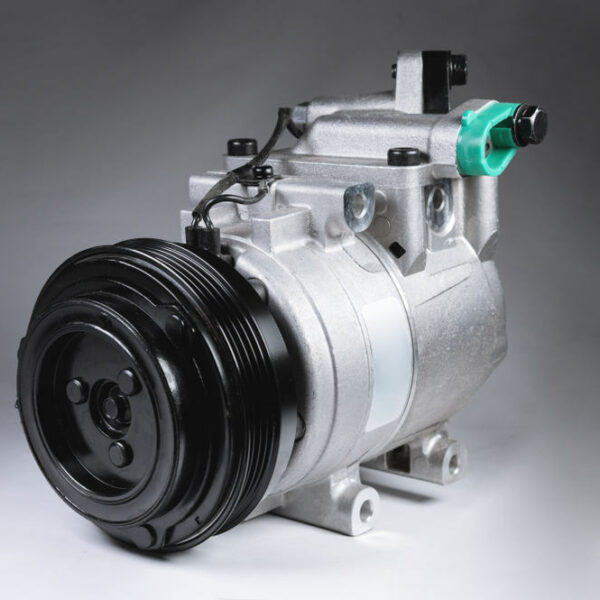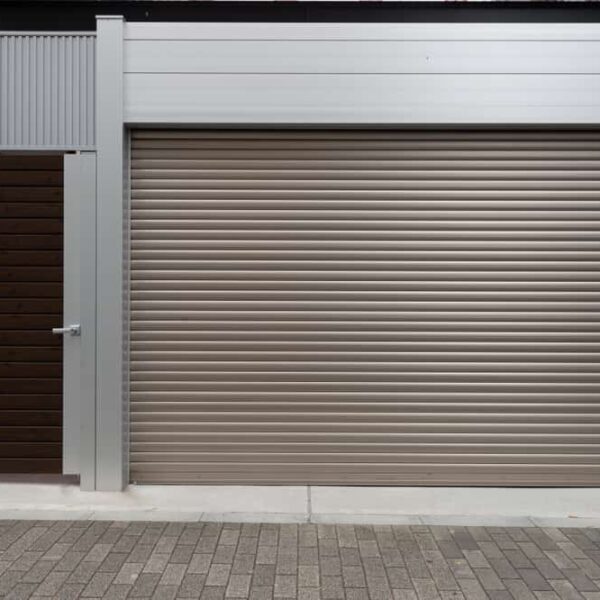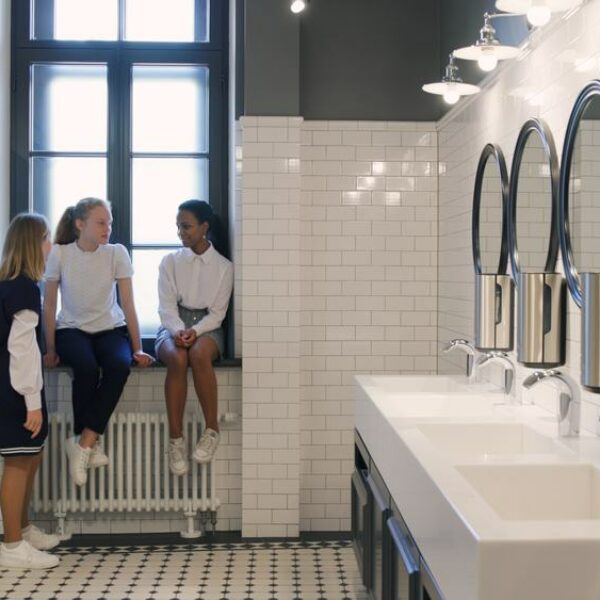If you’re planning a new bathroom or refurbishing an old one, it’s important to think about heating options. And it’s a wise move to think about it at the very beginning. Your choice can have a big impact on the layout of the whole room.
In the past, radiators were the main option for bathroom heating. But radiant heating is now a popular choice. So is it a good idea to have a heated floor in a bathroom?
We’re going to find out! We’ll take a look at the pros and cons of radiant heating in bathrooms. And we’ll tell you everything you need to know to help you choose the right heating solution for your home.
So read on to find out more …
Bathroom heated flooring: What is radiant heating?
Radiant heating, also known as underfloor heating, actually has a long history. The Romans were even using it to heat public baths, though it was a rarity in homes because of the cost.
The Roman version worked by raising the floor on columns. A furnace was then set up on an external wall, with the draft bringing the heat beneath the floor. The hot air was then drawn up through the walls, before leaving through flues at the top.
Romans aside, however, most of us are more used to radiators. These sit on the wall and warm the air around them. That warm air then circulates, raising the temperature in the room.
Today’s radiant heating works differently. It’s transmitted by electromagnetic waves, in a similar way to the warmth of the sun. When the waves strike an object – like a person – they heat it. The effect is to make you feel warmer, even if the air temperature is lower than in a room with radiators.
Two different Radiant Heating Systems
There are two different types of system used for radiant heating in homes, electric and hydronic.
With electric models, the heat comes from an electric current running through a mat placed beneath the floor. They warm up quickly – in as little as half an hour – and they’re easy to install. If you’re decent at DIY, you can give it a go yourself.
Hydronic models require more technical skill to fit. They work by pumping hot water through plastic tubes. The tubes either sit beneath the floor or are embedded in floor tiles.
They’re a good choice if you’re building a new home and looking for a system to heat the whole house. But if you’re looking to retrofit your underfloor heating, or to confine it to the bathroom, they’re expensive and involve more work. And they take longer to heat up too.
Heated Bathroom Floor Cost
Whichever type of system you choose, the upfront costs of installing radiant heating are likely to be higher than radiators.
If you’re installing a new system throughout your home, you’ll have other costs to take into account too. Hydronic radiant systems require a boiler with what’s known as an x-block, as well as a water heater. And it will need to be installed by a professional.
Expect total upfront costs anywhere between $6,000 and $14,000. The precise figure will depend on the area you need to cover, your choice of boiler system, and the labor costs.
If you’re fitting radiant heating in your bathroom only, though, the cost will be far lower. For that, an electric radiant system will be the best option. And you can expect to pay around $700.
And if you’re retrofitting radiant heating, you’ll have to pull up your existing floor. That will add to the labor costs unless you’re able to do it yourself. And depending on the kind of flooring, you may have to replace that too.
Radiators, in comparison, can cost between $100 and $500 each, depending on the size and style you choose. With labor on top, a single radiator will cost on average of $500. Of course, if you’re installing a whole-house system, you’ll also need to pay for the other components.
Heated Bathroom Floor Efficiency
But of course, the upfront costs don’t tell the whole story. There’s also the cost of running your heating system. And here, radiant heating has the advantage.
With these systems, you’re not wasting money heating air that rises to the top of the room and cools again. And because they heat the whole floor evenly, you won’t get any cold spots.
That compares favorably to radiators, which are often positioned on external walls and below windows. That makes it easier for the heat they generate to be lost outside the home.
All this means that with radiant heating you can turn your thermostat down, and still feel cosy and warm. On average, people with this type of heating can set their thermostats a whole 4 to 5 degrees Fahrenheit lower. That adds up to significant savings over the course of a year.
And while the upfront costs of hydronic systems are higher, running costs are even lower than for electric systems.
Heated Bathroom Floor Lifespan
Once they’re in place, radiant heating systems have a long life. They also require little maintenance – in the case of an electric system, none at all. (Your boiler, of course, will require maintenance, as with any other heating system.)
Many radiant systems come with 25-year warranties. And it’s reasonable to expect your system to last anywhere between 30 and 45 years.
Types of flooring
One area where radiant heating does impose some restrictions is in your choice of flooring.
With radiators, of course, you can have any kind of flooring you want. But because radiant heating sits below the floor, it requires something that will conduct the heat effectively.
Stone, ceramic, porcelain or encaustic concrete tiles are the best choice. These will heat up quickly and radiate the heat efficiently.
Some kinds of stone are better than others. Slate and flagstone are great options – they naturally conduct heat very well. Marble does too, but it’s slower to heat up in the first place.
Wood flooring needs to be handled with care. Engineered flooring with thinner boards works well. Softwoods and thicker boards can be problematic, and can act as a barrier to the heat.
Hardwoods are better heat conductors. But they can be damaged by changes in humidity levels, so may not be suitable. The same goes for bamboo.
If you’re thinking of wooden flooring, check the specifications to see whether it’s suitable for use with radiant heat.
Home comforts
We’ve already seen that radiant heating is brilliant at producing even warmth. That means you’ll always be cosy when you step out of your bath or shower. But it also provides some other advantages in terms of home comforts.
One of those is peace and quiet. With forced air systems, you may hear the furnace kicking in when the temperature falls. There’s none of that with a radiant heating system.
Radiant heat is also a great choice for anyone who suffers from dust allergies or other sensitivities. Because the system doesn’t circulate air, it won’t disturb any dust or other allergens. That’s a big advantage over forced air or radiator systems.
Layout
When you’re planning your bathroom, it’s a good idea to consider the way you’ll heat it at the outset. That’s because your choice can make a big difference to the layout.
With a forced air system, you’ll need to take account of the position of ducts. And with conventional central heating, you’ll need space on the wall for radiators.
But with underfloor heating, there’s none of that to worry about. Everything is hidden away below the floor. If your bathroom is small, that could make all the difference to the fixtures you can fit into place.
One thing you do need to be aware of, though, is that radiant heating will slightly elevate your floor. If you’re choosing an electric radiant heating system, the difference can be as little as half an inch. For hydronic systems, however, it can be much more.
If ceiling height is an issue in your bathroom, that could cause problems. Remember, building codes specify a minimum bathroom ceiling height. That’s 80 inches, and 60 inches where there are fixtures like washbasins or commodes.
In summary
So, to sum up: radiant heating has plenty of pros – and a few cons to be aware of too.
It’s efficient, heats up quickly and evenly, doesn’t disturb dust or allergens, and is nice and quiet. It won’t restrict the wall space you can use for bathroom fixtures. And once installed, systems last for decades and require minimal maintenance.
But it can be an expensive investment to start with – especially if you choose a hydroscopic system. And it will restrict your choice of flooring types (although you’ll still have plenty of options).
It will elevate your floor too, reducing the overall ceiling height. If you choose an electric system, the different will be minimal. But if you opt for a hydroscopic one, it can make a significant impact. If you’re in an older property with lower ceilings, it may not be the best choice.
Ready to choose?
We hope you’ve enjoyed our look at the pros and cons of a heated floor in a bathroom. As long as raising your floor level doesn’t cause problems, it has a lot to recommend it.
And while purchase and installation can be expensive, the lower ongoing costs and long life make it cost-effective. Just remember to choose the right flooring to get the best results.
Whether you choose a heated floor or a different option, we hope you’re soon enjoying a snug, warm bathroom!
